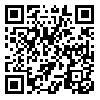Articles accepted at the time of publication
Back to the articles list |
Back to browse issues page
Assistant professor of linguistics- department of English language and literature-Faculty of Humanities- Yasouj University , reza.rezaei1@yu.ac.ir
Abstract: (593 Views)
Besides the main elements such as setting, theme, plot, and conflicts, any narrative or story requires another key element called character. It is the character that adds meaning and life to each of these elements, transforming a narrative into a compelling story. Characterization is essentially the process of bringing life and creating human figures from the elements of a narrative discourse. Creating and developing characters in the realm of storytelling and art is a delicate and novel task referred to as “characterization.” This process results in the creation of characters that are believable, engaging, and understandable for the audience. Characterization establishes a bridge of communication between the reader’s or viewer’s mind and the world of the story, enabling them to empathize with the characters, understand their emotions, and become curious about their actions and motivations, thereby increasing audience engagement.The corpus of this research consists of short stories by the Afghan author Mohammad Asef Soltanzadeh. The present study, relying on Soltanzadeh’s ability to utilize and develop story characters, is conducted in a descriptive-analytical manner. The aim has been to analyze the use of the element of characterization and the interaction between pragmatics and stylistics in three short stories from the collection “Nowruz is Only Splendid in Kabul,” considering Culpeper’s theoretical framework (2017). The results of this study indicate that characterization consistently follows three elements: the degree of narrative control, the dialectic of self and other, and explicit and implicit meanings within the overall narrative discourse, which the author skillfully employs.
Keywords: Characterization, Degree of Narrative Control, Dialectic of Self and Other, Pragmatics-Stylistics, Mohammad Asef Soltanzade
Article Type: مقالات علمی پژوهشی |
Subject:
Linguistics
Send email to the article author
| Rights and permissions | |
 |
This work is licensed under a Creative Commons Attribution-NonCommercial 4.0 International License. |






